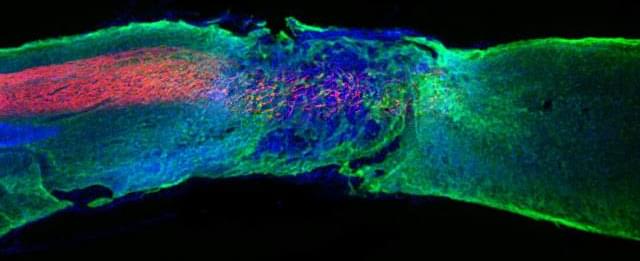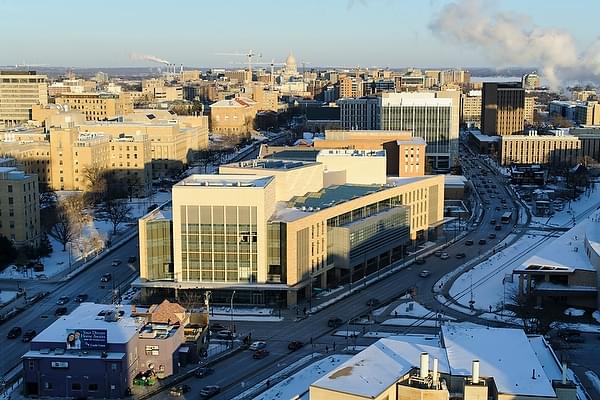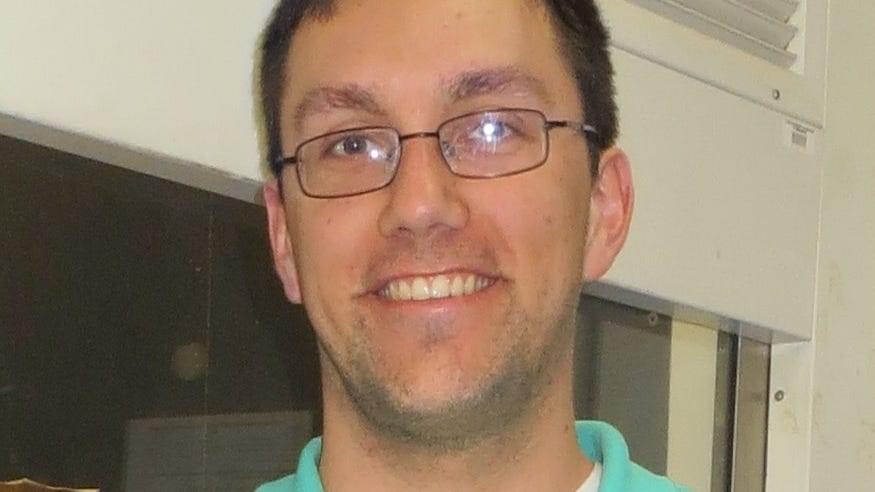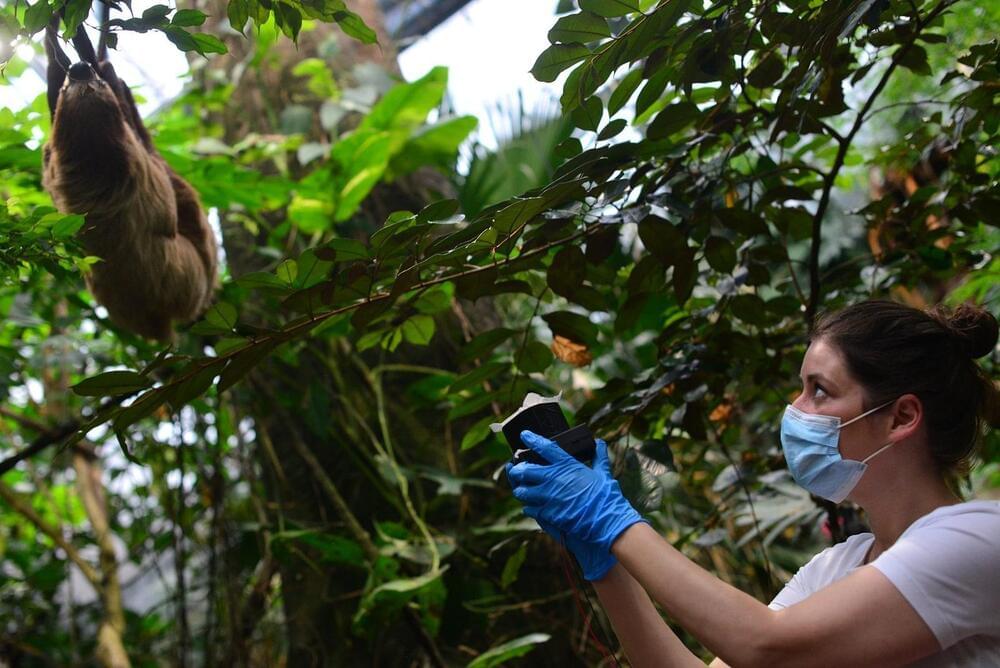Archive for the ‘biotech/medical’ category: Page 1083
Jan 8, 2022
Injectable Gel Reverses Paralysis In Mice With Damaged Spinal Cords
Posted by Jamie McGuigan in categories: biotech/medical, innovation
A single injection of a newly developed drug has been shown to reverse paralysis in mice with severe spinal cord injuries. By mimicking the extra-cellular matrix around the spine, the liquified drug promotes the regeneration of severed nerves and the repair of other vital tissues, allowing the rodents to regain the ability to walk within four weeks.
Describing this breakthrough in a new study in the journal Science, researchers explain how they injected synthetic nanofibers into the damaged tissue of mice 24 hours after making a cut in their spinal cords. Consisting of an array of peptides, these nanofibers quickly assemble into a gel around the wound and begin communicating with cells in order to promote healing.

An AgeX update. How iTR works starting at 12:14 and how it may be delivered.
Corporate update presentation from AgeX’s annual stockholder meeting in 2021, presented by Dr. Michael West and Dr. Nafees Malik.
Jan 8, 2022
NZ scientists in ‘game-changing’ plant cloning discovery
Posted by Omuterema Akhahenda in categories: biotech/medical, food
Kiwi scientists have helped discover a new gene described as a potential game-changer for cloning in global agriculture.
The gene allows natural reproduction by cloning in plants, enabling highly desirable traits to be carried through to the next generation rather than lost when the plants reproduce through pollination.
Named PAR, the new gene has been found to control parthenogenesis, a process whereby plant egg cells spontaneously grow into embryos without fertilisation.
Continue reading “NZ scientists in ‘game-changing’ plant cloning discovery” »
Jan 8, 2022
Goldman Sachs asks in biotech research report: ‘Is curing patients a sustainable business model?’
Posted by Omuterema Akhahenda in categories: bioengineering, biotech/medical, business, genetics
“The potential to deliver ‘one shot cures’ is one of the most attractive aspects of gene therapy, genetically-engineered cell therapy and gene editing. However, such treatments offer a very different outlook with regard to recurring revenue versus chronic therapies,” analyst Salveen Richter wrote in the note to clients Tuesday. “While this proposition carries tremendous value for patients and society, it could represent a challenge for genome medicine developers looking for sustained cash flow.”
🤔
Goldman Sachs warns sales from the most successful disease treatments are difficult to maintain.
Jan 7, 2022
New way to alter DNA, affect health circumvents gut bacteria
Posted by Omuterema Akhahenda in categories: biotech/medical, chemistry, health, neuroscience
Our gut microbiome helps us out every day by processing the fiber we can’t digest. The bacteria ferment the fiber into key chemicals known as short-chain fatty acids, or SCFAs, that are essential for human health. SCFAs fight inflammation, help kill dangerous bacteria, protect the lining of the gut, and can even help prevent cancer.
In a new study, the John Denu lab at the University of Wisconsin-Madison’s Wisconsin Institute for Discovery has learned that the fatty acids butyrate and propionate also activate p300, a crucial human enzyme that promotes the unspooling of DNA. This unwound DNA allows more genes to become active and expressed, which ultimately affects human health.
A study by Wisconsin Institute for Discovery researchers challenges long-held beliefs, with potential implications for physiological processes and diseases such as propionic acidemia, autism spectrum disorder and Alzheimer’s disease.
Jan 7, 2022
Provocative new findings suggest a surprising cause of Down syndrome: cells linked to aging
Posted by Omuterema Akhahenda in categories: biotech/medical, genetics, life extension, neuroscience
Down syndrome is the most common genetic disorder, impacting about 1 in 700 newborns around the world. At some point during their first hours and days of embryonic development, their dividing cells fail to properly wriggle a chromosome pair away from each other, leaving an extra copy where it shouldn’t be. Although scientists have known for more than six decades that this extra copy of chromosome 21 causes the cognitive impairment people with Down syndrome experience, exactly how it happens remains a matter of debate.
But in recent years, scientists using new RNA sequencing techniques to study cells from pairs of twins — one with Down syndrome and one without — have repeatedly turned up a curious pattern. It wasn’t just the genes on chromosome 21 that had been cranked way up in individuals with Down syndrome. Across every chromosome, gene expression had gone haywire. Something else was going on.
On Thursday, a team from the Massachusetts Institute of Technology reported in Cell Stem Cell that it may have found a surprising culprit: senescent cells, the same types implicated in many diseases of aging. The study was small and preliminary, and some experts want to see it replicated in samples from more individuals before buying into its interpretations. But they are nevertheless intriguing.
Jan 7, 2022
Ruby Princess sparks Covid concerns after a dozen passengers reportedly test positive in US
Posted by Quinn Sena in category: biotech/medical
Princess Cruises’ ship was at centre of 2020 outbreak in Sydney which resulted in over 900 cases and 28 deaths.
The Ruby Princess cruise ship sparked concerns about a Covid-19 outbreak in San Francisco after a dozen passengers were reported to test positive.
It is nearly two years since a Covid outbreak when the ship docked in Sydney resulting in over 900 infections and 28 deaths.
Jan 7, 2022
ELECTRIC FEEL: Scientist explains how eels make electricity
Posted by Kelvin Dafiaghor in category: biotech/medical
Jan 7, 2022
Scientists Pull Animal DNA Out of Thin Air
Posted by Genevieve Klien in categories: biotech/medical, genetics
While doing their research, the teams had no knowledge of the other’s work, but after finding each other’s preprint proof-of-concept papers online, the two groups decided to submit their manuscripts for review together. “It’s insane that two groups did such similar studies in two places, but it’s also a very rare opportunity,” says Bohmann.
The fact the groups took different paths to find a similar result is particularly compelling, says Mark Johnson, who studies eDNA and Texas Tech University and was not involved in the work. “It’s really exciting looking at how both of these papers, done independently of each other, have produced, really, the same results,” says Johnson. “It adds that extra little bit of validation that what we’re seeing is real.” While hopeful about the future of airborne eDNA, Johnson notes huge leaps need to be made before the techniques used in the zoo can be applied in the field. Collecting eDNA in the wild adds a host of new variables, and enclosed spaces like caves may accumulate genetic material differently than open areas like grasslands. “The next step is to take it from the zoo into the natural environment and see what we find there,” says Johnson.
Clare and Bohmann anticipate that one of the best applications of airborne DNA could be to measure biodiversity in difficult-to-access places, such as burrows and caves. Fabian Roger, an eDNA researcher at ETH in Switzerland, is eager to see how the work could be applied to studying insects. “We have very little ways of monitoring them other than catching and killing them,” says Roger, who was not involved in the recent work. Using eDNA to detect insect species from a sample of air instead of trapping them could rapidly advance entomology research. The technique could also clue scientists into the presence or spread of an invasive species. Like Clare and Bohmann, Roger doesn’t see airborne eDNA as a replacement for traditional monitoring methods, but as another tool they can use. “Biodiversity science is sort of an all-hands-on-deck situation. It’s not one over the other, or one or the other,” says Roger.

















